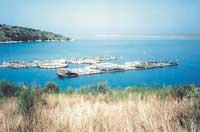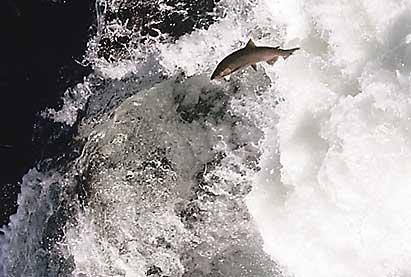Cormorán unfair competitor for some
2005/01/01 Saiz Elizondo, Rafa - Itsas Enara Ornitologia Elkartearen lehendakaria Iturria: Elhuyar aldizkaria
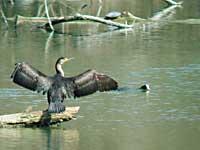
Our elders gave him the proper name: the cormorant, that is, the water line or the candle. And in other languages they used the same route to designate this aquatic black bird. Also the scientific name — Phalacrocorax — is the same.
Therefore, the cormorant is black, at least European. In fact, in the world there are another 21 species of cormorant, most of which live in the sea, but also of fresh water, which live in large masses of water. In Europe there are three species, of which two can be seen in Euskal Herria, which live in western Europe. One is a handsome cormorant and the other a large cormorant.
The big cormorant ( Phalacrocorax carbo ) is the one that is located in the center of the salsa. It is easily recognizable by its spectacular fishing time with incessant entrances and exits to the water, and even more spectacular when it leaves the water and places the outstretched wings, to the sun or to the wind, in an appropriate fence, in the branch of a tree or in the bow of a boat.
Great angler
The cormorant is a specialized fishmonger that just eats nothing more. And devours any fish that is put to the height of the beak. It has evolved for this work, that is, for fishing. And that's why there are fights, because fishermen believe that the cormorants catch their own.
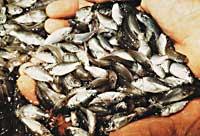
As has been said, in Europe there are three species of cormorant. But there are great cormorants of two races. Those of a breed live mainly on the coast; they reproduce in Britain, Great Britain and Ireland and spend the winter part on Iberia, among other places, in Euskal Herria and more north. The other races are reproduced in the Netherlands, Denmark, the Baltic zone and, more inland, in Poland, Germany and neighbouring countries. They are two different races, divided into two different populations.
The population of this second, that is, the continental race, was depressed and, therefore, when the European Union drafted the directive on birds in 1979, included it in the list of species of the first additive. Thus, it was decided that, not only had to be preserved, but also to adopt positive and active measures of population recovery.
Until then the cormorant of the continental race was hunted. For this reason, the first measure was to ban hunting. Many of the countries that inhabit the cormorants of this breed were not yet obliged to comply with the norm in the EU, but had to respect it as they entered the Union, because all legal provisions entered automatically into force, and also it. Another of the main measures was the protection of reproduction colonies, especially in Denmark and Holland.
It is advisable to reproduce but not too much
These protective measures have allowed the cormorant to have increased in the area. On the contrary, aquaculture has also grown, especially freshwater fish farming. And the conflict had to explode sooner or later, of course. And it is that for the cormorant there are no prey easier than the fish of the farm: it is not as skillful as the fish that lives loose and fast to escape to the peak of the cormorant, more silly, and in addition, the cormorant finds a lot of fish in a small and closed well.
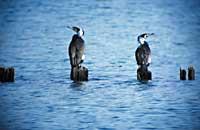
For this reason, the owners of fish farms have complained that the cormorant has increased too much and has caused them great economic damage. And the European Union has responded to these complaints. Consequently, the cormorant of the continental race continues to enjoy the protection that legally corresponds to it, but henceforth no action will be undertaken to promote its conservation. In fact, with this change, it must be officially understood that the great cormorant has no conservation problems. At least the great cormorants of continental race, except those that have been removed from the list. The rest of races have never been on that list.
However, your removal from the first list does not mean you can hunt. For this purpose, it should be included in the list of hunting species of the directive. But ornithologists fear that the decision taken is not a pioneer in others. That is, under the pressure of the owners of nurseries and fishermen, the administration will not initiate control campaigns, eliminating the cormorants.
In addition, the cormorant is not the only demon of fishermen. They have also turned against Koartza. Are you also going to remove the corresponding protection? What will be the next? You have to wait for it to happen.

Gai honi buruzko eduki gehiago
Elhuyarrek garatutako teknologia



